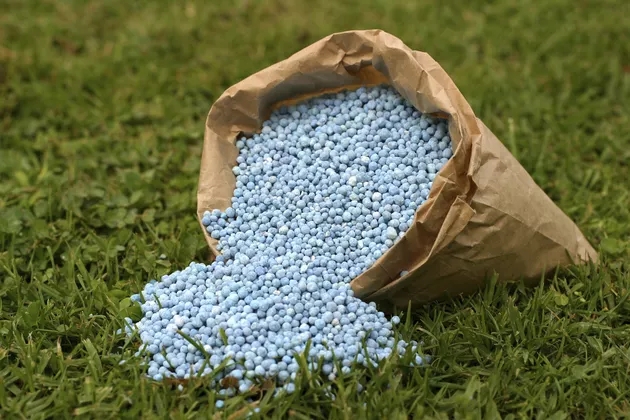
Exhibition time: 17-19 March, 2026 Shanghai, China
 中文
中文

Exhibition time: 17-19 March, 2026 Shanghai, China
 中文
中文

A bag of blue fertilizer spilling over.
One of three major ingredients included in general fertilizers, phosphorus is essential for seed formation and important for flowering and root growth. General fertilizers contain the chemicals nitrogen, phosphorus and potassium, which are also called NPK. Fertilizer labels list these chemicals as three numbers, such as 10-15-10. The middle number shows the percentage of phosphorus the fertilizer contains. Natural fertilizers such as manure also contain phosphorus. Though it's an essential plant nutrient, excessive phosphorus is bad for plants and can pollute natural water sources.
Plants grown for their seeds and fruits benefit from phosphorus, and the nutrient helps establish healthy root systems in young plants. Phosphorus supports the transfer of energy in plants, which is a different role from other plant nutrients, such as nitrogen. Nitrogen is part of the chlorophyll molecule and is needed for vegetative growth, but phosphorus promotes root growth, flowering and setting seed. High levels of phosphorus occur in seeds and fruit, and plants low in phosphorus have a small fruit set. Other signs of phosphorus deficiency include delayed maturity and reduced growth. Deficient plants may show purple coloring in the older leaves. Young plants are particularly vulnerable to low levels of phosphorus.

In soils low in phosphorus, this plant nutrient improves lawn establishment, and high-phosphorus fertilizers promote flowering in some plants. Phosphorus is often included in starter fertilizer for new lawns because it promotes strong root growth. This helps the new grass establish quickly and create a dense, healthy covering of turf that discourages weeds. Grass suffering from a phosphorous deficiency grows poorly and turns dark green then purple. Many plants flower well without fertilization, but some, such as amaryllis (Hippeastrum group), benefit from high-phosphorus fertilizers. Usually grown in containers indoors, amaryllis grows outdoors in U.S. Department of Agriculture plant hardiness zones 8 through 10.
Phosphorus in soil can wash away in heavy rains and pollute waterways. Phosphorus in chemical and natural fertilizers is soluble and easily accessible to plants at first but becomes less so over time as the phosphorous compounds react with others in the soil. Both soluble and insoluble phosphorus can contaminate ground water. Soluble phosphorus dissolves in rainwater, and heavy rainfall also washes away soil particles that contain insoluble phosphorus. Both the runoff and sediment carry phosphorus to algae living in waterways. The sudden influx of large amounts of nutrient causes excessive algal growth, which is also called algal bloom.
Gardeners should apply phosphorus with care to avoid problems with overfertilization and pollution. Routinely applying phosphorus without testing for deficiency can cause phosphorous toxicity. Overfertilization with phosphorus causes leaves to turn yellow between their veins. This is because too much phosphorus prevents iron, manganese and zinc from being available to plants. University agricultural departments and local government offices often provide soil testing services that show the level of phosphorus and other nutrients in soil. If you think your soil is low in phosphorus, have a sample tested before applying fertilizers high in this nutrient, and don't apply phosphorus if heavy rain is forecast.
From Hunker
